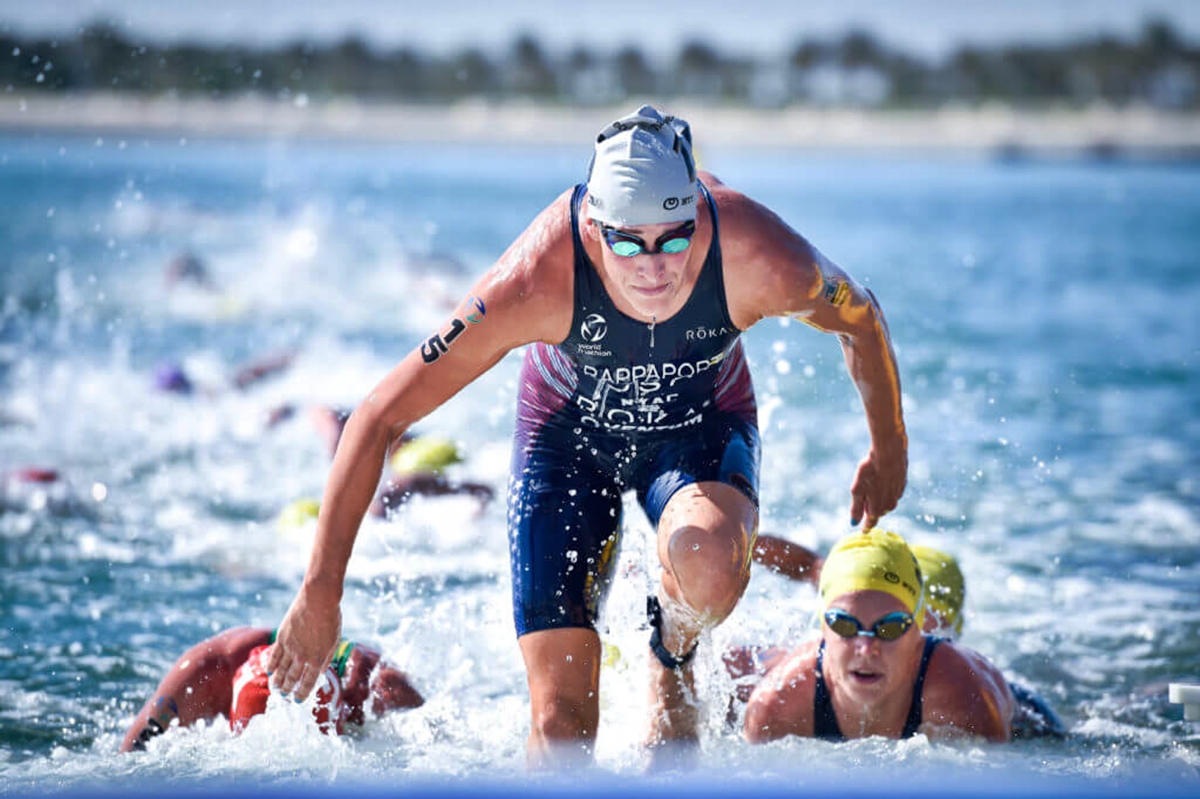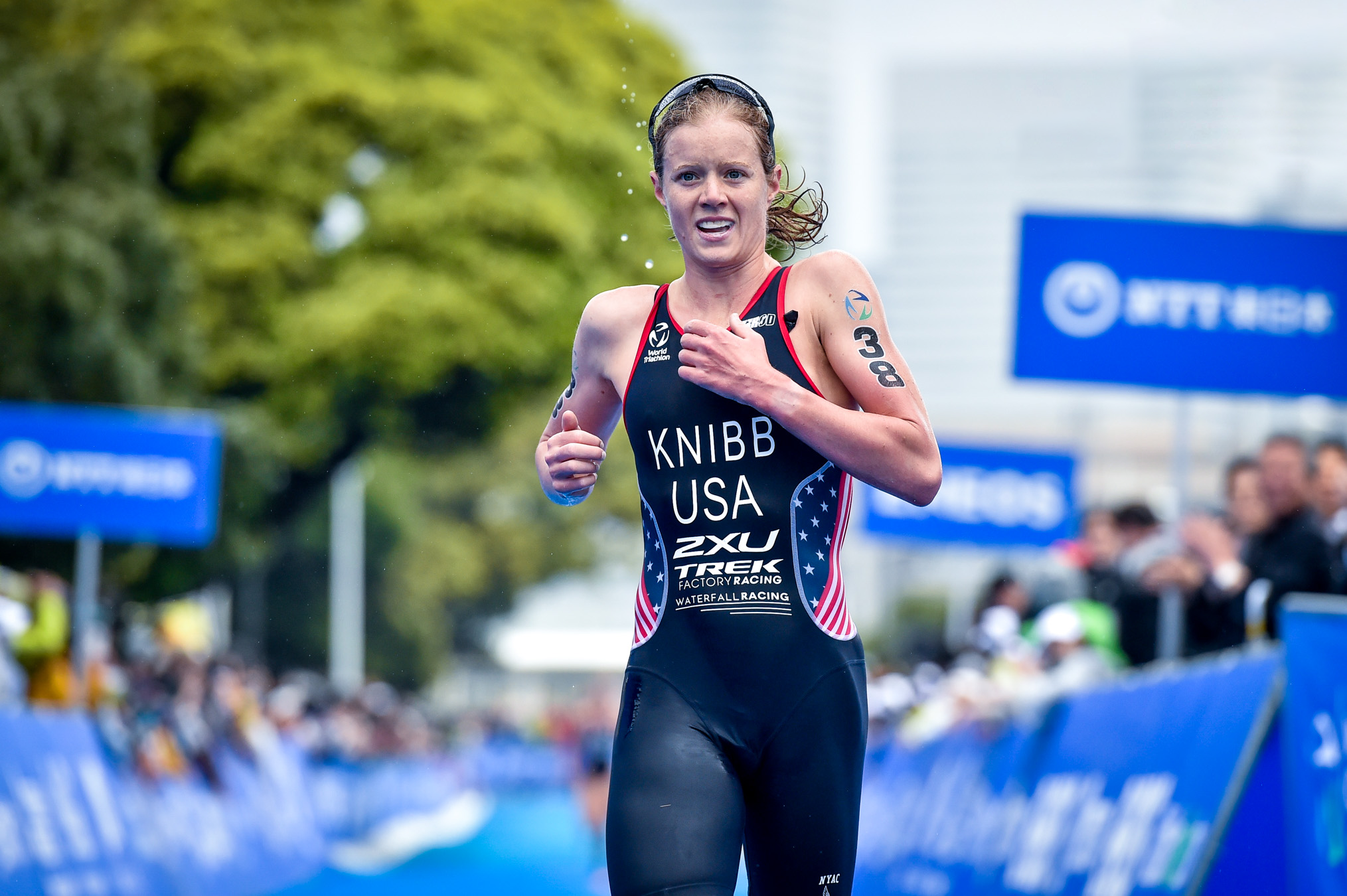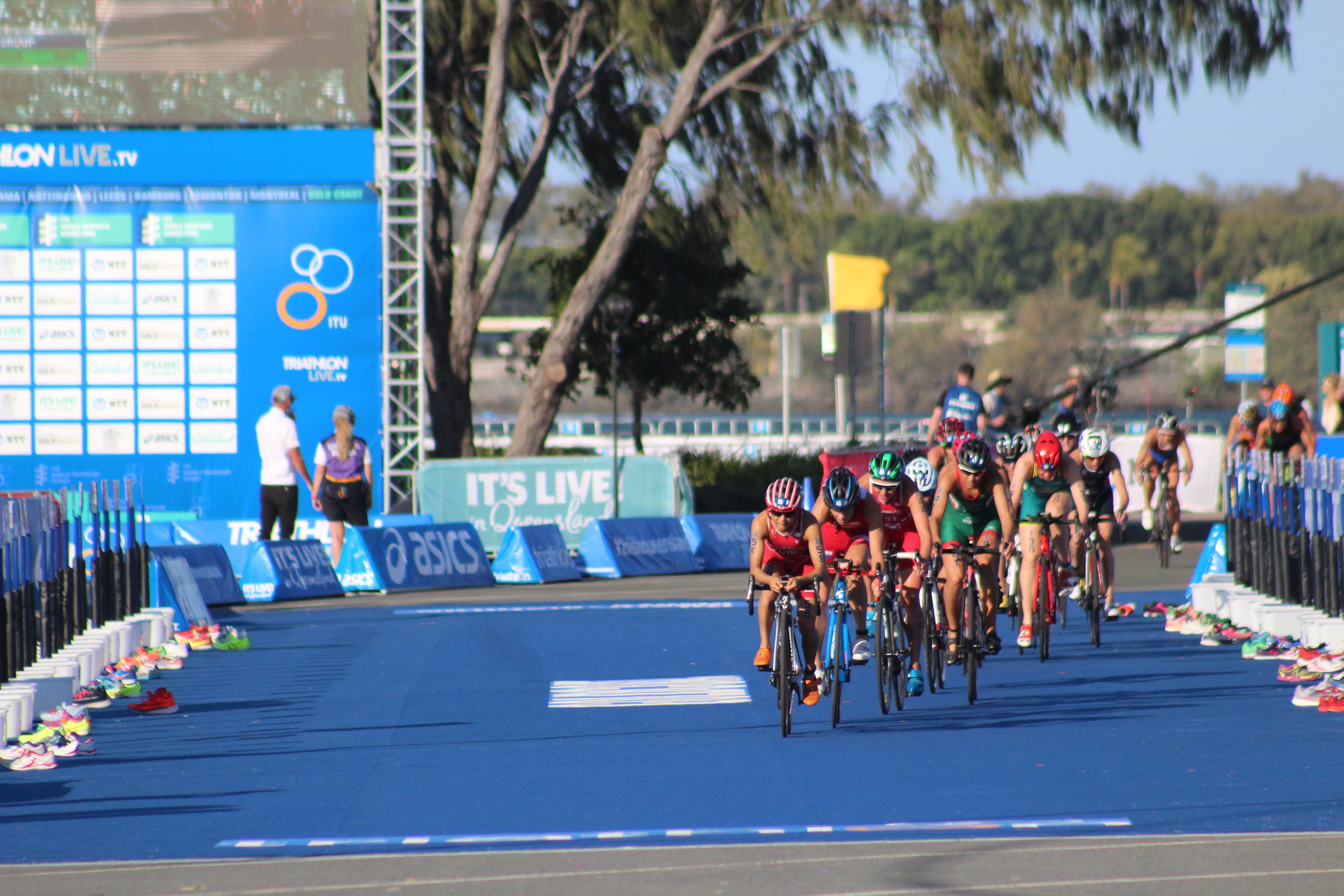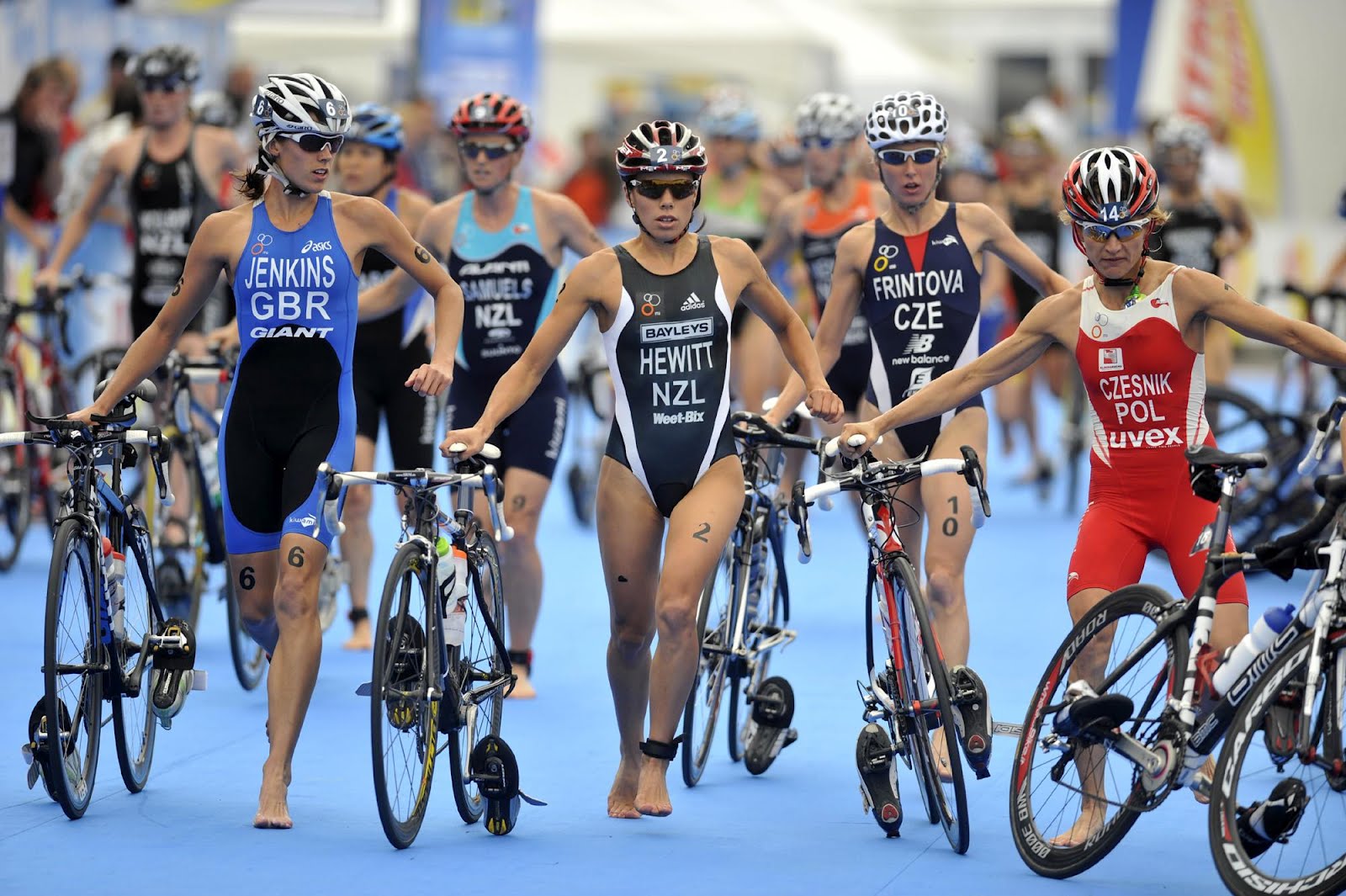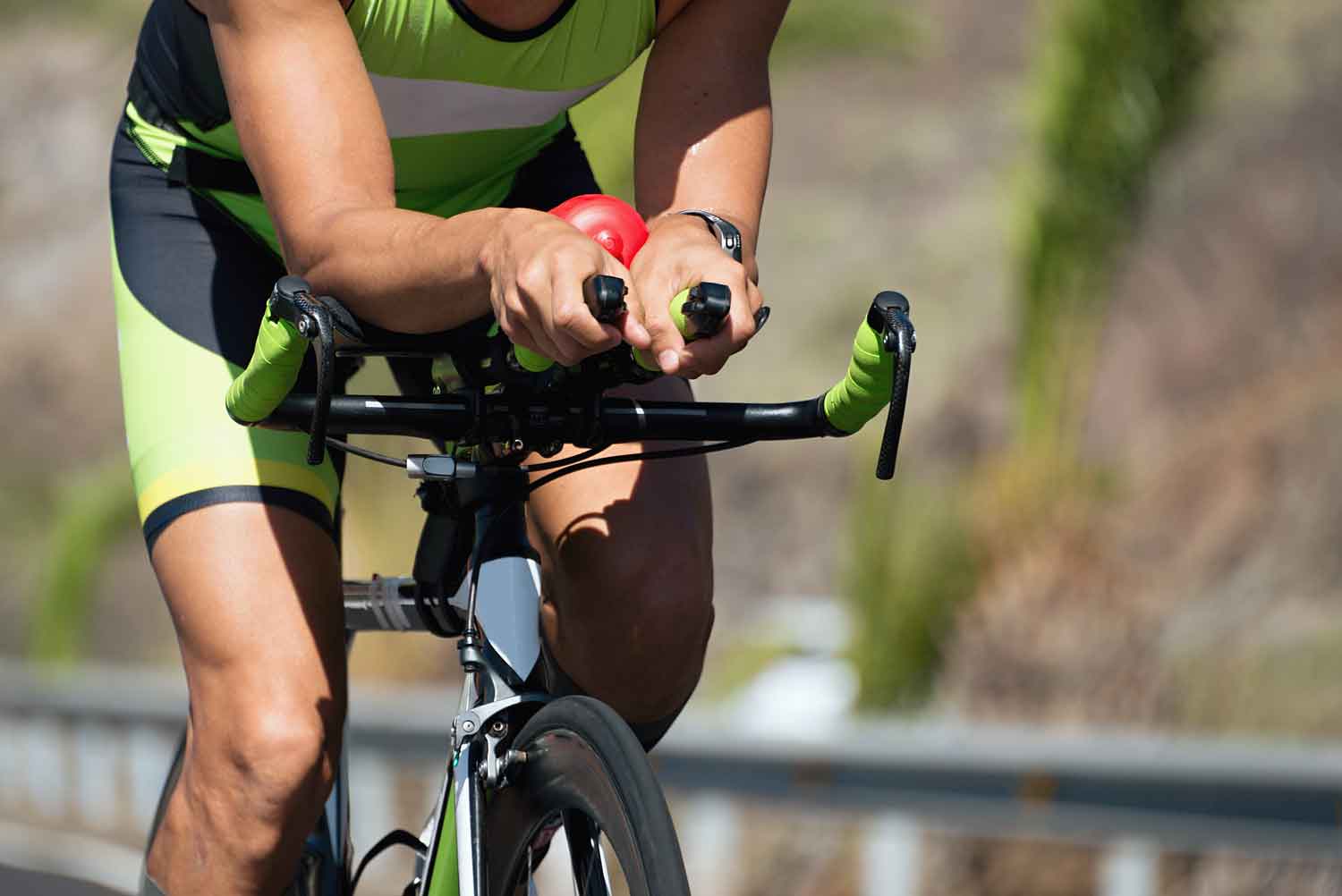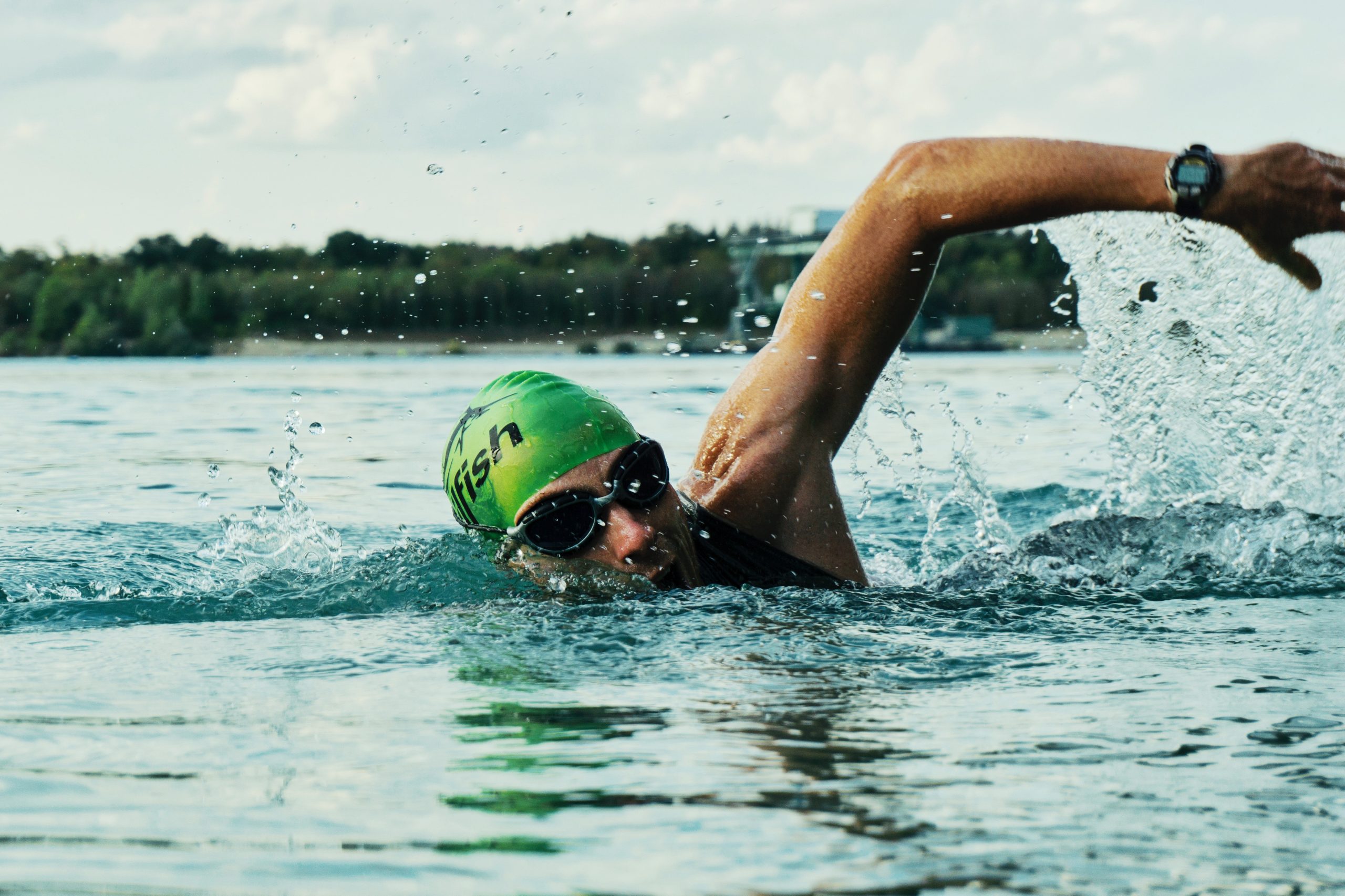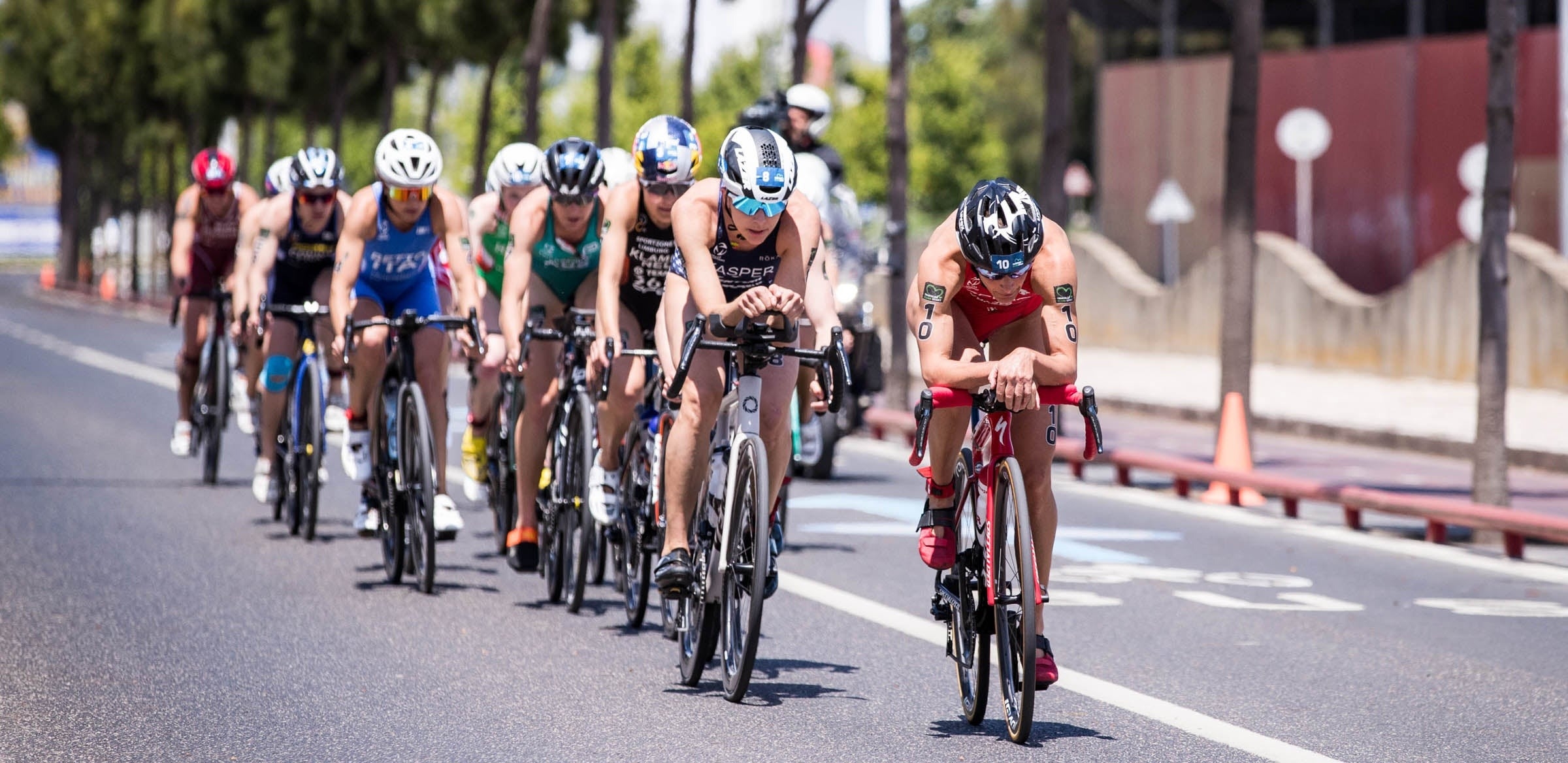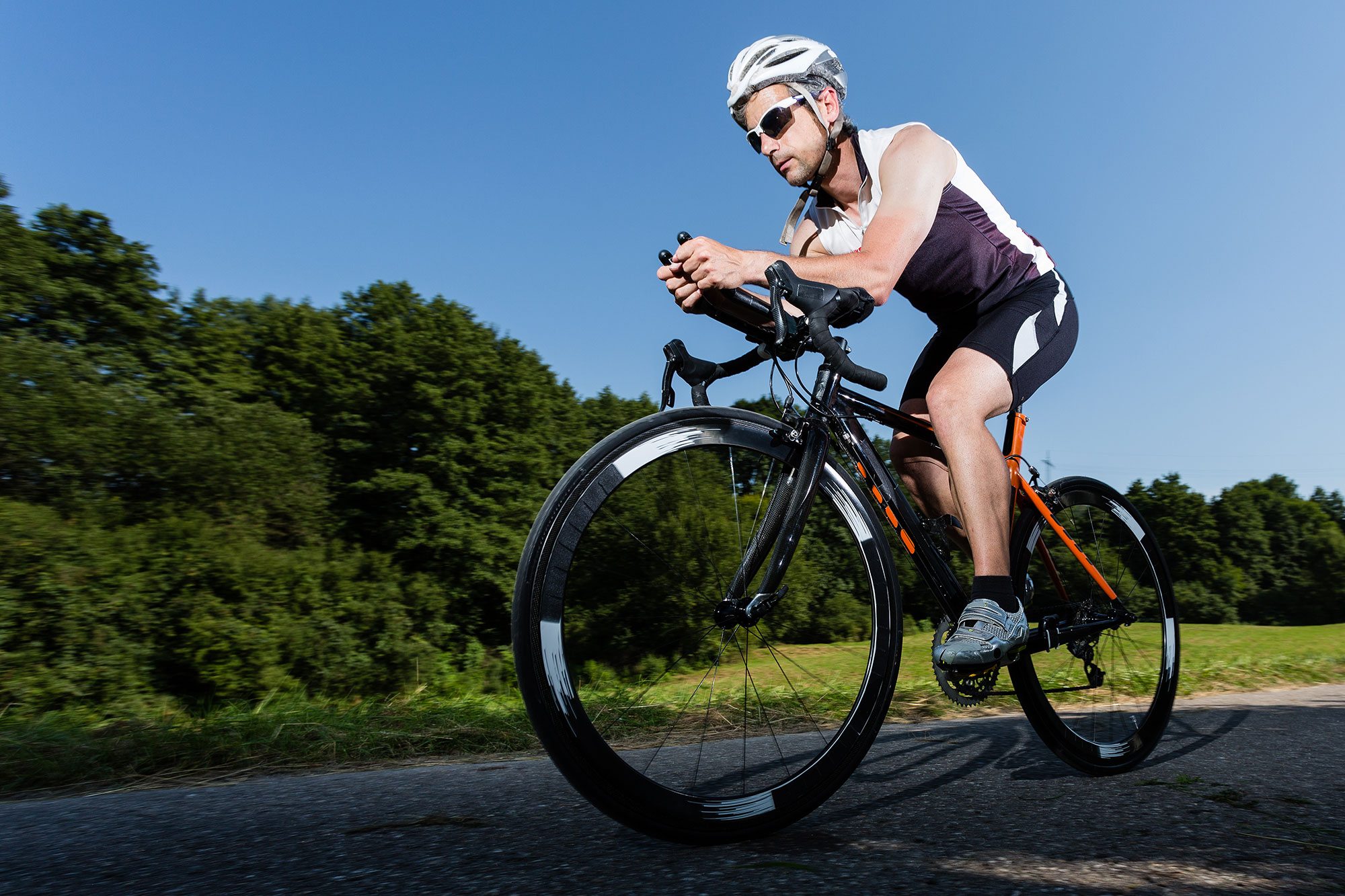

Featured
How To Pace Yourself In A Triathlon
Modified: August 19, 2023
Learn how to pace yourself in a triathlon with our featured tips and strategies. Achieve optimal performance and finish strong in your next race.
Introduction
Welcome to the exciting world of triathlon! Whether you are a seasoned athlete or a beginner looking to challenge yourself, participating in a triathlon is an incredible feat. It combines swimming, cycling, and running, pushing your body to its limits and testing your physical and mental capabilities.
One of the key factors that can make or break your performance in a triathlon is pacing. Pacing refers to the distribution of your energy and effort throughout the race, ensuring that you maintain a sustainable speed and do not burn out too early. It is a delicate art, requiring a deep understanding of your own fitness levels, training, and race goals.
Why is pacing so important? Well, imagine starting the race at an all-out sprint, expending all your energy in the first few kilometers. By the time you reach the bike or run segment, you will be exhausted and unable to maintain a competitive pace. On the other hand, starting too cautiously might result in a lackluster performance, leaving you with regrets about untapped potential.
The key to effective pacing is finding the balance between pushing yourself to your limits and conserving enough energy to finish strong. In this guide, we will explore various strategies and techniques that will help you pace yourself in a triathlon, ensuring that you have an enjoyable and successful race.
Before we dive into the details, it is important to note that everyone’s pacing strategy will differ based on personal fitness levels, race goals, and experience. There is no one-size-fits-all approach when it comes to pacing, but there are general principles and guidelines that can steer you in the right direction.
So, whether you are aiming to finish your first triathlon, set a personal record, or qualify for a prestigious race, let’s discover how you can pace yourself effectively throughout the swim, bike, and run segments. Strap on your gear, take a deep breath, and let’s embrace the challenges and triumphs of pacing in a triathlon!
Understanding the Importance of Pacing
Pacing is not just about maintaining a consistent speed throughout the race; it is about strategic energy management. By pacing yourself effectively, you can optimize your performance, minimize fatigue, and reduce the risk of hitting the infamous “wall.”
One of the main reasons why pacing is crucial in a triathlon is to prevent early burnout. Each segment of the race places different demands on your body and requires varying levels of energy. If you exert too much effort in the beginning, especially in the swim leg, you risk depleting your glycogen stores and experiencing muscle fatigue before even reaching the bike or run stages.
Pacing also plays a vital role in maintaining a steady heart rate throughout the race. By starting at a controlled pace and gradually ramping up your effort, your heart rate will remain within an optimal range. This allows for efficient oxygen delivery to your working muscles and helps prevent early fatigue.
Furthermore, pacing allows you to gauge and manage your effort levels better. It’s easy to get caught up in the adrenaline-fueled atmosphere of race day and push harder than you should. By pacing yourself, you can better assess your fitness and adjust your speed accordingly, ensuring that you do not overexert yourself early on and compromise your overall performance.
In addition to physical benefits, pacing also has psychological advantages. A well-paced race instills confidence and a positive mindset. It allows you to pass other competitors who may have started too quickly and are now struggling. Maintaining a consistent and controlled pace can be mentally empowering, boosting your morale and keeping you focused on achieving your goals.
Lastly, pacing allows for efficient energy distribution and utilization. By pacing yourself properly, you can optimize your body’s energy systems and avoid the dreaded energy crashes. It also helps preserve energy reserves for crucial stages of the race, such as the final push to the finish line.
All in all, understanding the importance of pacing in a triathlon is essential for success. By pacing yourself effectively, you can avoid early burnout, maintain a steady heart rate, manage your effort levels, boost your mental strength, and optimize your body’s energy utilization. So, let’s dive into the strategies and techniques that will help you find your ideal pace and conquer the challenges of the race.
Setting Realistic Goals
Before diving into the specifics of pacing, it is crucial to set realistic and achievable goals for your triathlon. Setting the right goals not only helps you stay motivated but also allows you to plan your pacing strategy accordingly.
First, consider your level of experience and fitness. Are you a seasoned triathlete or a beginner? Have you been training consistently, or is this your first race? Understanding your current abilities will help you set goals that align with your capabilities.
Next, consider the distance of the triathlon. Is it a sprint, Olympic, or Ironman distance? Each distance comes with its own set of demands and requires different pacing strategies. Set goals that take into account the challenges of the specific distance you’re competing in.
When setting goals, it’s important to be both ambitious and realistic. While it’s good to push yourself out of your comfort zone, setting unattainable goals can lead to frustration and disappointment. Take into consideration your training progress, past race performances, and any external factors that may affect your performance on race day.
It can be helpful to set goals based on specific performance metrics such as finishing time, average pace, or placing within your age group. This allows you to break down the race into measurable milestones and helps you stay focused throughout. However, remember that not all goals need to be time-related. Goals can also be centered around technique improvement, consistency, or simply finishing the race strong.
Another important aspect of goal-setting is having a primary goal and backup goals. Your primary goal should be your ultimate target, while backup goals act as contingency plans in case unforeseen circumstances arise. For example, if you encounter unexpected challenges during the swim leg, your backup goal may be to focus on a strong bike and run performance.
Lastly, ensure that your goals are personal and meaningful to you. They should align with your values, aspirations, and desire to push yourself. When setting goals for a triathlon, it’s essential to remember that it’s not just about the result but also about the journey and the personal growth you experience along the way.
By setting realistic goals, you can tailor your pacing strategy to match your objectives. Knowing what you want to achieve and having a clear roadmap to get there will motivate you during training and help you execute your pacing plan with confidence on race day.
Training for Consistency
Consistency is the key to success in triathlon pacing. In order to effectively pace yourself during a race, you must train your body and mind to maintain a consistent effort level over a prolonged period of time. Here are some strategies to help you train for consistency:
1. Establish a Training Schedule: Develop a training plan that includes regular workouts and rest days. Consistency in your training schedule builds discipline, helps your body adapt to the demands of the sport, and enhances your ability to pace yourself effectively.
2. Incorporate Long Slow Distance (LSD) Sessions: These sessions involve maintaining a steady, comfortable pace for an extended period of time. LSD sessions build endurance and teach you to maintain a consistent effort over a longer duration, a skill crucial to pacing in a triathlon.
3. Interval Training: Include interval sessions in your training to improve your speed and cardiovascular fitness. These sessions alternate between periods of high intensity and periods of active recovery. By practicing different intensities, you train your body to adapt to varying effort levels, which is essential for optimal pacing.
4. Practice Race-Specific Workouts: Simulate race conditions during your training by incorporating workouts that mimic the demands of the swim, bike, and run segments. This helps familiarize your body with the specific effort levels required in each discipline, enabling you to pace yourself accordingly on race day.
5. Monitor Heart Rate and Perceived Exertion: Use heart rate monitors and listen to your body’s perceived exertion to gauge your effort level during training sessions. This helps you develop a sense of pace and enables you to recognize and maintain a sustainable effort without pushing too hard or too little.
6. Focus on Technique: Efficiency in swimming, cycling, and running is crucial for maintaining a consistent pace. Use your training sessions to focus on improving your technique, which will decrease energy wastage and allow you to maintain a more even effort level throughout the race.
7. Mental Conditioning: Pacing is not just physical; it is also mental. Train your mind to stay focused and positive during training sessions. Practice visualization techniques and positive self-talk to stay motivated and maintain a consistent effort throughout the race.
8. Gradually Increase Training Load: Gradually increase the intensity and duration of your training sessions to build your endurance and stamina. Pushing your limits in training helps you develop the mental and physical resilience needed to maintain a consistent pace during a triathlon.
Consistency in training is essential. It allows your body and mind to adapt, helps you develop a sense of pace, and prepares you to execute your pacing strategy effectively on race day. Remember that pacing is a skill that is honed over time, so be patient and trust in your training process.
Practicing Different Pacing Strategies
Pacing in a triathlon is not a one-size-fits-all approach. Different race distances, course conditions, and personal preferences require the ability to adapt and practice various pacing strategies. Here are some common strategies to consider:
1. Negative Split: This strategy involves starting the race at a slightly conservative pace and gradually increasing your effort level throughout the race. With a negative split, the second half of the race is faster than the first half. This strategy allows you to conserve energy early on and finish strong.
2. Even Split: In an even split strategy, you aim to maintain a consistent pace throughout the entire race. This requires careful monitoring of your effort level and adjusting as needed. The goal is to finish the race with a similar pace for each segment.
3. Positive Split: A positive split strategy involves starting the race at a slightly faster pace and gradually slowing down as the race progresses. This strategy is typically used when the race conditions or course terrain make it difficult to maintain a consistent pace throughout.
4. Variable Pacing: This strategy involves adjusting your pace based on the demands of each segment. For example, you might push harder on the bike and aim for a more controlled effort on the run. Variable pacing allows you to utilize your strengths and adapt to the unique challenges of each discipline.
5. Surging: Surging involves alternating between short bursts of higher intensity and periods of lower intensity. This can be effective in breaking away from a pack or gaining a competitive advantage. However, it requires careful execution to avoid excessive fatigue.
6. Pacing by Perceived Exertion: Instead of relying solely on external data like heart rate or pace, pacing by perceived exertion involves listening to your body and adjusting your effort level accordingly. This strategy is useful when racing in unfamiliar environments or when external factors may affect data accuracy.
7. Pacing by Heart Rate: Using heart rate as a guide allows you to monitor your effort level and ensure you stay within your desired zone. It can be helpful in preventing early fatigue and avoiding going too hard too soon.
It is important to practice these pacing strategies during your training sessions to see which one works best for you. Experimenting with different strategies will also help you develop a sense of pacing that aligns with your fitness level and race goals.
Remember, no strategy is foolproof. It is crucial to be adaptable during the race and adjust your pacing strategy based on how you feel and the conditions of the race. By practicing different pacing strategies, you will be better prepared to handle the challenges that come your way and finish the race on a high note.
Monitoring Your Effort Levels
Monitoring your effort levels throughout the race is essential for effective pacing. It helps you maintain a sustainable pace, avoid early fatigue, and make necessary adjustments during the race. Here are some ways to monitor your effort levels:
1. Use Perceived Exertion: One of the most effective ways to monitor your effort level is to rely on your own perception of how hard you are working. Pay attention to how your body feels during each segment of the race. Are you breathing heavily? Are your muscles fatiguing quickly? Adjust your pace accordingly to maintain a sustainable effort level.
2. Utilize Heart Rate Monitors: Heart rate monitors are valuable tools for monitoring your effort levels during a triathlon. By staying within your target heart rate zones, you can ensure that you are not exerting excessive effort too early in the race.
3. Pace by Time or Distance: Breaking down the race into smaller segments, whether by time or distance, can help you monitor and regulate your pacing. Set mini-goals for each segment and adjust your speed accordingly to make sure you’re pacing yourself effectively.
4. Pay Attention to Breathing: Your breathing rate and depth can be indicators of your effort level. If you find yourself struggling to breathe comfortably, it may be a sign that you are pushing too hard. Slow down your pace and focus on controlled breathing to maintain an optimal effort level.
5. Listen to Your Body: Your body communicates with you during a race. Pay attention to any signs of excessive fatigue, muscle cramps, or dizziness. If you feel that your effort level is becoming unsustainable, it’s important to back off and adjust your pace accordingly.
6. Monitor External Factors: Be aware of external factors that may affect your effort level, such as heat, humidity, or challenging terrain. Adjust your pace accordingly to compensate for these factors.
7. Practice in Training: Use your training sessions as an opportunity to practice monitoring your effort levels. Experiment with different intensities and observe how your body responds. This will help you develop a sense of pacing and become more attuned to your effort levels.
8. Listen to Your Coach: If you are working with a coach, trust their guidance and feedback. They have the expertise to monitor your progress and provide valuable insights on your effort levels and pacing.
Monitoring your effort levels is an ongoing process during a triathlon. It requires mindfulness and an ability to make adjustments as needed. By staying attuned to your body and being proactive in monitoring your effort levels, you can ensure that you maintain a sustainable pace throughout the race and cross the finish line with pride.
Nutrition and Hydration Considerations
Nutrition and hydration play a vital role in maintaining optimal performance and pacing in a triathlon. Proper fueling ensures that your body has the energy it needs to sustain your effort level throughout the race. Here are some important considerations for nutrition and hydration:
1. Pre-Race Nutrition: The meal before your race should be balanced and easily digestible. Focus on consuming carbohydrates for energy, moderate amounts of protein, and healthy fats. Avoid trying new foods on race day to prevent digestive issues.
2. Hydration: Proper hydration is crucial for maintaining performance and preventing dehydration. Start hydrating well before the race and continue to drink fluids during the event. Drink according to your thirst and consider using a sports drink that contains electrolytes to replenish sodium and other essential minerals lost through sweat.
3. On-Course Nutrition: During the race, replenish your energy stores with easily digestible carbohydrates such as energy gels, chews, or sports drinks. Experiment with different types of fuel during your training to find what works best for you. Set a schedule for fueling to ensure you consistently provide your body with the necessary energy.
4. Practice Hydration Strategies: Training is the perfect time to test different hydration strategies. Experiment with different types of fluids, the timing and frequency of your intake, and the use of electrolyte supplements. This will help you understand what works best for you and avoid any surprises on race day.
5. Monitor Your Body: Listen to your body’s signals during the race. Pay attention to any signs of dehydration or electrolyte imbalance such as muscle cramps or a dry mouth. Adjust your hydration and fueling strategy accordingly to meet your body’s needs.
6. Transition Nutrition: Have a plan for fueling during transitions. Quick and easily digestible snacks like energy bars or a sports drink can help sustain your energy levels as you move from one discipline to another.
7. Post-Race Recovery: After the race, prioritize replenishing your body’s glycogen stores by consuming a combination of carbohydrates and protein. This will aid in muscle recovery and preparation for future training sessions.
8. Practice Nutrition Timing: Train your body to handle nutrition intake during race conditions by practicing nutrition timing in your training sessions. This will help your body adapt and become more efficient at processing and utilizing fuel during the race.
Remember, nutrition and hydration are highly individualized, so what works for one person may not work for another. It’s important to experiment during training to find the right nutrition and hydration strategy that supports your pacing and performance goals in a triathlon.
Mental Strategies for Pace Management
Mental strength plays a crucial role in effective pace management during a triathlon. Developing the right mindset and employing mental strategies can help you stay focused, maintain a consistent effort, and overcome challenges. Here are some mental strategies for pace management:
1. Set Intentions and Goals: Before the race, set clear intentions and goals for your pacing strategy. Visualize yourself maintaining a steady pace, staying focused, and pushing through any obstacles that come your way. Having a clear purpose will help you stay motivated and committed to your pacing plan.
2. Break the Race into Smaller Pieces: Instead of focusing on the entire race distance, break it down into smaller, manageable segments. By tackling one leg or section at a time, you can maintain focus on maintaining a consistent effort level for each segment, rather than feeling overwhelmed by the entire distance.
3. Positive Self-Talk: The way you talk to yourself during the race can greatly impact your pace management. Replace negative thoughts with positive affirmations and encouragement. Use phrases like “I can do this” or “I am strong and capable” to boost your confidence and maintain a steady effort level.
4. Stay Present and Mindful: Focus on the present moment rather than worrying about the past or the future. Be aware of your breathing, your body, and the sensations you’re experiencing. This mindfulness will help you stay in tune with your effort level and make necessary adjustments as needed.
5. Manage Race-Day Excitement: Race-day excitement and adrenaline can tempt you to start too fast and throw off your pacing strategy. Practice deep breathing techniques and visualization exercises before the race to calm your nerves and help you maintain a controlled effort level from the start.
6. Embrace Discomfort: Pacing in a triathlon is challenging, and there will be moments of discomfort. Embrace these feelings as a natural part of the race and remember that discomfort is temporary. Focus on staying consistent and remind yourself of the satisfying feeling that comes with pushing through challenging moments.
7. Use Visualization: Visualization is a powerful mental tool for pace management. Before the race, visualize yourself pacing confidently and smoothly throughout each segment. Imagine crossing the finish line feeling strong and accomplished. When faced with difficulties during the race, call upon these mental images to stay focused and motivated.
8. Practice Resilience: Pacing effectively requires resilience. Embrace the inevitable ups and downs of a triathlon and be prepared to adapt your pace when needed. Take setbacks as opportunities to learn and grow, and maintain a determined mindset to push through challenges and maintain a consistent effort.
Maintaining a strong mental game is just as important as physical preparation in pacing yourself during a triathlon. By utilizing these mental strategies, you can stay focused, resilient, and in control of your pace throughout the race.
Transitioning Smoothly between Disciplines
Transitioning between disciplines is a crucial aspect of triathlon pacing. Smooth and efficient transitions can save valuable time and help you maintain your momentum throughout the race. Here are some strategies to transition smoothly:
1. Establish a Transition Routine: Develop a consistent routine for each transition. Practice this routine during your training sessions to ensure it becomes second nature on race day. Knowing exactly what needs to be done during each transition will help minimize time wasted and keep your focus on pacing.
2. Lay Out Your Gear: Lay out your gear in a logical and organized manner in the transition area. Place items in the order in which you will need them, making it easy to locate and put them on or pack them up quickly.
3. Visualize the Transition: Before the race, mentally rehearse each transition. Visualize yourself smoothly moving from one discipline to the next. Picture yourself going through your routine efficiently, without any hesitations or distractions.
4. Practice Quick Changes: During your training, incorporate short practice sessions where you practice changing attire quickly. This helps you become more efficient in getting in and out of your gear, minimizing your transition time.
5. Use Elastic Laces and Quick Fasteners: Replace traditional laces with elastic laces on your running shoes and use quick fasteners on your cycling shoes. These small adjustments can make a significant difference in cutting down your transition time.
6. Maintain a Fluid Motion: When transitioning between disciplines, aim for a smooth and fluid motion. Practice moving from one discipline to the next without any sudden stops or wasted movements. This will help maintain your momentum and save valuable time.
7. Stay Focused: Keep your focus on the transition itself and what needs to be done. Avoid getting distracted by other athletes or external factors. The more focused you are, the smoother and faster your transitions will be.
8. Have a Plan for Nutrition and Hydration: If you plan to consume fuel or hydrate during the transitions, have a plan in place. Consider having your nutrition or fluids easily accessible and ready to consume without slowing down your transition process.
Transitioning smoothly between disciplines is an important element of pacing in a triathlon. By implementing these strategies, you can minimize time spent in transition areas, maintain your racing rhythm, and stay on track with your pacing goals.
Race Day Planning and Execution
Race day is the culmination of all your hard work and preparation. Proper planning and execution are crucial for pacing yourself effectively throughout the triathlon. Here are some tips to help you plan and execute your race day:
1. Arrive Early: Arrive at the race venue early to give yourself ample time for check-in, setting up transitions, and getting mentally prepared. Avoid unnecessary stress by allowing enough time to navigate through any unexpected circumstances that may arise.
2. Warm-Up Routine: Develop a warm-up routine that includes dynamic stretches and a short warm-up swim, bike, and run to prepare your body for the race. This will help activate your muscles and prepare them for the effort ahead.
3. Review the Course: Familiarize yourself with the race course before the start. Review the swim, bike, and run segments, noting any challenging sections, turns, or elevation changes. Having a mental map of the course will allow you to plan and adjust your pacing accordingly.
4. Stick to Your Pacing Plan: Trust the pacing strategy you have developed during your training and stick to it. Avoid getting caught up in the excitement of the race and resist the temptation to start too fast. Rely on the plan you have set forth and maintain a consistent effort level.
5. Stay in the Present Moment: Focus on the present rather than dwelling on past mistakes or worrying about the future. Stay focused on each segment of the race and the task at hand. This will help you maintain proper pacing and make adjustments as needed.
6. Hydrate and Fuel Adequately: Follow your nutrition and hydration plan that you have practiced during training. Consistently fueling and hydrating your body will ensure you have the energy needed to maintain your pace throughout the race.
7. Be Flexible: Adapt to unexpected circumstances that may arise during the race. Whether it’s changes in weather, equipment malfunctions, or other external factors, stay flexible and adjust your pacing accordingly.
8. Embrace the Race Day Atmosphere: Take in the energy and excitement of the race day atmosphere. Use the cheers from the crowd and the presence of other athletes to fuel your motivation and maintain your focus on pacing.
9. Mental Resilience: The race may have challenging moments, both physically and mentally. Stay mentally strong, maintain a positive mindset, and push through any difficulties that arise. Embrace the journey and remind yourself of your training and preparation.
10. Enjoy the Experience: Remember to enjoy the entire race experience. Embrace the challenges, celebrate your achievements, and revel in the joy of crossing the finish line. Triathlons are about more than just pacing; they are about personal growth, pushing your limits, and enjoying the journey every step of the way.
By having a solid race day plan and executing it with careful pacing, you can make the most of your triathlon experience and achieve your goals with confidence and success.
Conclusion
Pacing yourself effectively in a triathlon is a skill that takes time, practice, and careful planning. It requires a deep understanding of your own abilities, race goals, and the ability to adapt to different race conditions. By setting realistic goals, training consistently, and practicing different pacing strategies, you can optimize your performance and maintain a steady effort throughout the race.
Monitoring your effort levels, taking into account nutrition and hydration considerations, and employing mental strategies are all essential components of successful pacing. By paying attention to these factors, you can sustain your energy, stay mentally focused, and adapt to the challenges that arise during the race.
Transitioning smoothly between disciplines and executing your race day plan are also crucial for effective pacing. By developing a routine, visualizing transitions, and having a clear plan, you can save valuable time and maintain your momentum throughout the race.
Remember, pacing in a triathlon is not just about the time on the clock. It’s about finding the right balance between pushing yourself to your limits and conserving enough energy to finish strong. It’s about embracing the challenges, enjoying the journey, and crossing the finish line with a sense of accomplishment.
So, as you train, visualize your goals, and prepare for your next triathlon, remember the importance of pacing. Embrace the art of finding your rhythm, maintaining a consistent effort, and adapting as needed. With discipline, perseverance, and a balanced approach, you’ll be well on your way to achieving your triathlon goals and experiencing the satisfaction of a well-paced race.

